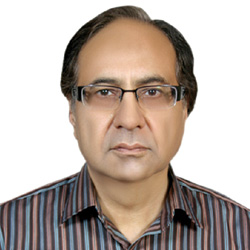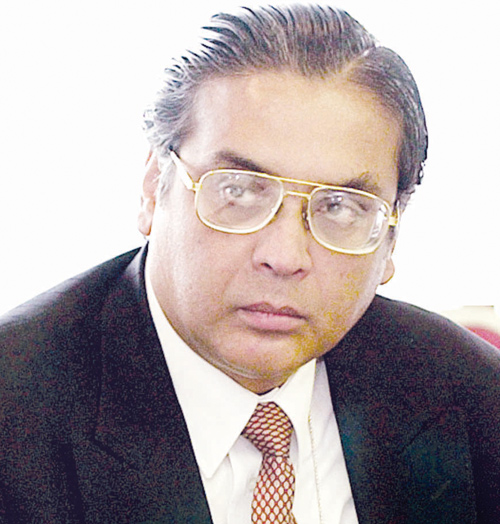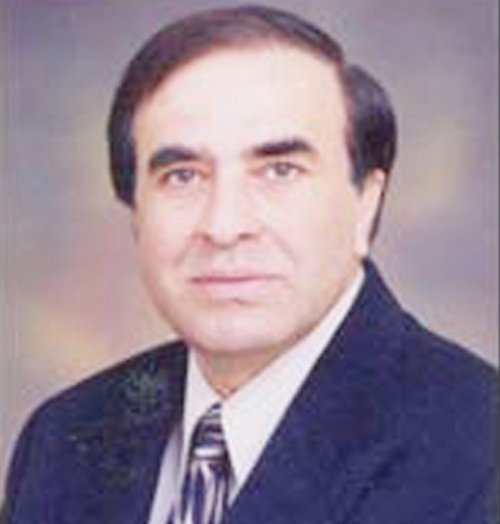FOCUS
The new trade policy once again seeks to achieve the formidable $35 billion export target by 2018, but without ensuring the resolution of some basic problems of the industry, including the supply of uninterrupted power and gas on inexpensive rates.
 Generally the Strategic Trade Policy Framework 2015-18 announced by the minister for commerce is being termed as his wish list, which lacks serious benchmarking to effectively boost the country’s falling exports.
Generally the Strategic Trade Policy Framework 2015-18 announced by the minister for commerce is being termed as his wish list, which lacks serious benchmarking to effectively boost the country’s falling exports.
What happened to the previous trade policy (2012-18) announced in 2012 is a valid question being asked by the exporters. That envisaged Rs95 billion three-year target which eventually ended up with $75 billion exports leaving a shortfall of $20 billion.
Exporters often talk about the lack of interest even on part of the commerce minister to increase exports. They also question the delay of four months by the prime minister to approve the new strategic trade policy framework.
“The new trade policy offers nothing to boost the declining exports,” said the renowned economist and former advisor on finance Dr Hafeez Pasha. He said exports were the life-line of Pakistan which required 50 percent growth in the next three years, without which debt service liabilities coming in 2018 would cause immense problems.
The most important issue, he pointed out, was the realignment of the exchange rate, which was still very high compared to regional economies. It will have to be brought down to compete with China, India and Bangladesh. The IMF after the 10th review of Pakistan’s economy said in its press note that the exchange rate was 17 percent higher. “But in the afternoon, the government forced the Fund officials to remove this exchange rate issue from the press note. This happened for the first time in our history.”
He said non- oil imports have increased while exports were falling despite increasing regulatory duties on various items. “There is a trade war going on and we are unprepared to adjust our exchange rate while China, India and Turkey have drastically adjusted exchange rate with the results their exports are increasing and ours are falling,” Dr Pasha said.
Pakistan, he said, gained additional $1 billion exports to European Union (EU) after the GSP status during the first year, which fell 11 percent in the second year because of the overvalued currency. “What we gained in one year, we lost in the second year and this calls for readjusting our currency against the dollar,” he said.
Recently Egypt and Turkey revised their currencies downward by 30 percent and 22 percent respectively. Bangladesh, he said, was offering cash subsidy to the exporters, besides extending duty drawback on concessionary rates and this was how its exports reached $30 billion annually.
While in Pakistan, there was no such cash incentive and more problems were being created by not giving their Rs200 billion sales tax refunds. “And this has resulted in 14 percent drop in our exports.”
Speaking of electricity theft, Dr Pasha said it was high, though the government was offering fuel adjustment surcharge which is a positive sign, “it would be better if the government brings down the basis tariff structure to provide some permanent relief to the industry.”
Nonetheless, the new trade policy is seen as more realistic to achieve $35 billion target in 2018, the election year in Pakistan. The $24 billion current exports are considered far less than the potential. The current year export target has been set at $30 billion.
The realistic export target envisaging $11 billion increase planned for the next three years is a good sign.
As per the government, the major reason for declining exports is lack of competitiveness and reliance on the cotton crop. This could be the reason the government instead of emphasising on the textile sector offered some new incentives to the leather and pharmaceutical industries. Some say it was an undue favour because both these industries cultivated good relations with the bosses of the ministries of finance and the commerce.

Dr Hafeez Pasha
Former Finance Advisor
“There is a trade war going on and we are unprepared to adjust our exchange rate while China, India and Turkey have drastically adjusted exchange rate with the results their exports are increasing and ours are falling.”
The commerce minister believes leather, fisheries, pharmaceutical and surgical goods have greater export potential. Whereas generally cotton and cotton products are considered major sources for generating export revenue.
The new trade policy has earmarked Rs18 billion to implement the three year strategic framework. Since the Finance Minister Ishaq Dar is always concerned about the fiscal deficit, it is unlikely this amount will be released. The commerce ministry officials maintain this funding is vital to meet the four challenges ie boosting exports, improving competitiveness, increasing efficiency and enhancing regional trade. It is in the backdrop that the trade policy will provide Rs1 billion a year per company to upgrade technology in various sectors.
The plan to support upgrading technologies is certainly a positive step, but it is to be seen if this step will help the domestic manufacturing industry or the foreign brands. Major export oriented sectors like leather, home appliances, cutlery, pharmaceutical, surgical and sports goods have been handicapped because of the use of inefficient technologies.
While there is certain emphasis on increasing trade by cooperating more with Iran, China, Afghanistan and Central Asia, there is nothing in the policy about trade and economic relations with India. It goes without saying that the current tense political relation with India, Islamabad cannot concede anything to New Delhi to help set up its relations with landlocked Afghanistan through Wagah border.
The new strategy targets the markets of China, Iran and Afghanistan by focusing on their four products – meat, horticulture, basmati rice and the jewellery.
“It is important to understand why the prime minister’s office took four months to approve the policy. In fact this shows the lacklustre response of Mian Sb towards the problems of the exporters,” said the chairman of the Pakistan Bedwear Exporters Association, Shabbir Ahmed.
He said the new policy is ambitious and asks for an annual export target which is very difficult to achieve considering the lack of Commerce Minister Khurram Dastgir’s assertiveness. “I don’t find any drastic measures in the new trade policy to increase exports,” he said, adding few incentives were given to the leather and pharmaceutical industries, and no favours to other export oriented businesses.
“The prime minister and the concerned ministers must extend practical support to the export industry by offering inexpensive and timely power and gas supplies along with returning billions of sales tax refunds,” he said.

Shabbir Ahmed
Pakistan Bedwear Exporters Association Chairman
“The prime minister and the concerned ministers must extend practical support to the export industry by offering inexpensive and timely power and gas supplies along with returning billions of sales tax refunds.”
The government and exporters need to push each other. A paradigm shift could be to open export associations’ offices abroad to synergise the trade offices and export associations.
Generally, the role of the ambassadors and commercial officials at the Pakistani embassies abroad is criticised as they are accused of taking good salaries, perks and privileges without finding new markets for Pakistani exports.
However, it is argued that given the current subdued global economic environment, nothing much could increase exports substantially, and the developing economies would continue to face challenges.
Another important issue is lack of the diversification and value-addition, which results in low competitiveness with regional countries. The neighbouring markets provide exceptional opportunities for export of services that are unavailable in Pakistan, a matter to which the commerce ministry only pays lip service.
Way forward is to effectively task the ambassadors and commercial officials abroad to find new markets for Pakistani exports. Their role is critical for boosting exports and can only be done when the exporters are taken into confidence. Someone at the top will have to make sure the new trade policy is implemented in letter and spirit to increase exports to the GDP ratio, which was 8.8 percent in the last financial year with fears it can fall further in 2015/16.
The writer is a senior journalist based in Islamabad